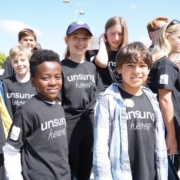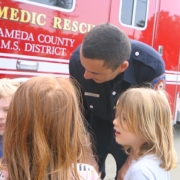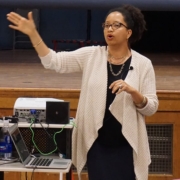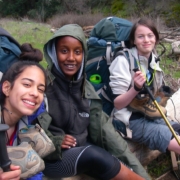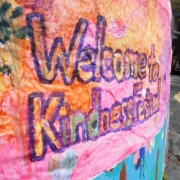We arrived at Henry Coe Park on Saturday morning, after driving through off and on rain. We ate a quick “camper” lunch, then got geared up for the trip. While gearing up, it started to hail – hard! While the kids were excited to see the hail – some were even running around trying to catch it in their mouths – I was a bit more apprehensive knowing that we were about to head out.
After a big introductory circle, we split into three groups and hit the trail – in a cold rain. All of the groups had three Outward Bound instructors and 7-8 students. Hiking on steep trails with a heavy pack is strenuous, and some of the students weren’t too much larger than their packs. The kids were instructed in how to keep up – how to call “red light, yellow light, green light” to the group to get them to stop, slow down, or go (with anyone who needed being able to call it with no judgement on the person who called it), and that the group had to stay together and take care of each other. My group figured out quickly to put the slower hikers in the front to set the pace. Even so, we stopped every 100 yards or so to adjust gear, drink water, or catch our breaths. This made the two mile hike to the camp site long – we arrived as the sun was setting. We set up camp, made dinner, and went to bed in the cold, wet, darkness.
When we woke up the next morning, everything had frozen (after it had rained for a few hours at night). The tarp hanging inches over my face had frozen solid, and all of the dew was frozen white. We dragged ourselves out of the warm sleeping bags (thankfully OB had provided us with quality gear) and set about making breakfast. We also got a lesson on pooping in the woods (we didn’t see a Porta Potty until the morning of the third day). As the sun came up, everything started to melt. We packed up our wet gear and headed out. The second day was my group’s longest hiking day – 4.4 miles to the next campsite. The trails again were strenuous, but beautiful, and it took a while to make any progress. Some of the kids started to suffer a bit. As their teacher, my instinct was to step in and help out, but the instructors asked me to step back and let the kids figure things out on their own. One of OB’s goals is to get the group functioning independently from the adult guides. To my group’s credit, by the afternoon they were functioning as a competent unit – leading, navigating, taking care of each other, and energized – singing, chanting (cadence!), and figuring out riddles as we hiked. Even the more physically challenged kids were keeping up now – and I and the instructors exchanged glances, surprised that the group had gelled so quickly. With a little prodding from me (“Let’s get to camp before dark this time…”) we made it to the edge of our campsite. First though, we had to do a stream crossing – which involved taking off our hiking boots, putting on camp shoes/sneakers, following protocol, and wading across the slippery rocks through the ice-cold water. We all made it and were at our campsite, which was next to the stream. The kids made camp, dinner, cleaned up, had evening circle, and headed off to sleep. By chance, Mia and I noticed a large shooting star. As we were gazing at the sky, the International Space Station flew by. I thought it might be the ISS, but wasn’t sure, but Randy’s email confirmed it!
We woke again on the third day to another frozen wonderland. Following the same routine, we headed out again, this time doing another two stream crossings immediately (more challenging in the cold morning). We stopped at the Porta Potty, and settled down in a clearing. The students then started on their “solos” where they spent about 45 minutes on their own, away from each other, being introspective, mindful, and writing letters to themselves. I went off, sat by the stream in the sun and blissfully read a book. We then ate lunch, and hit the trail, again a strenuous uphill to our next, and final campsite. We started to see other groups heading to the same group campsite at the top of a ridge. As we entered our campsite, a flock of wild turkeys scattered. We made camp, and headed over to another group’s area for dinner with everyone. After dinner, we headed back to camp, had our evening meeting, and went over responsibilities and the agenda for the final day. We were due back at the park headquarters at 9:30am, so had to wake up at 6:00am.
We woke up in the dark and started to pack up. The instructors motioned me over and told me what they had planned. Since our group was doing so well, it was time to “shipwreck” them. The four adults put on our packs and walked out of camp, leaving the startled and confused kids behind. We (the adults) hid close by (since we couldn’t really desert them) and watched. The group handled all of their responsibilities, ate a quick cold breakfast, packed up, policed camp (leave no trace!) and left on the planned route. We came out of hiding and followed discretely behind. The two other groups also appeared on the trail – heading back, though by slightly different routes. Our group stopped to fill their water bottles at a pond (and purified the water), and continued on.
We all arrived back and started to unpack. After lunch, we had our graduation ceremony, where each student spoke about another student in their group, noting their strengths and what they had contributed to the group. Everyone (including me!) was awarded an OB patch. We had finished! We piled into cars and headed back to school. The trip was great – a nice combination of strenuous exercise and camping in a beautiful natural setting, combined with team building, and learning outdoor skills. The main goals of OB – developing independence and resilience – were definitely accomplished!
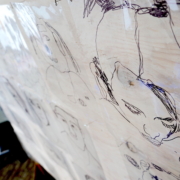
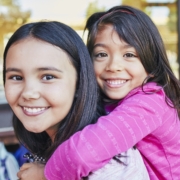
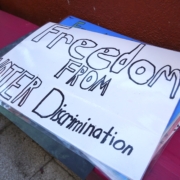
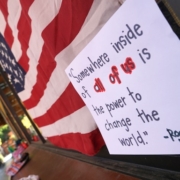
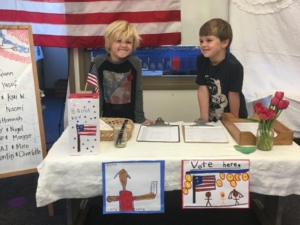 We brainstormed names new names for our classroom blog and created lists, ballots, posters, and everything we needed to open the polls at 7:30 Tuesday morning. We even created an area where voters could sit and read about positive change makers while they waited for their turn in the booth. We made sure that every voice was counted and that we tallied every vote. We also shared some of the National Election ‘firsts’ with the class reading the names and sending up a cheer after each one. This fit nicely with our earlier conversation about different types of people and the celebration of diversity. Our little Sweet Briar election was truly a powerful experience that we hope will stay with them for a very long time. Stay tuned to see the new blog name in all its glory coming next week!
We brainstormed names new names for our classroom blog and created lists, ballots, posters, and everything we needed to open the polls at 7:30 Tuesday morning. We even created an area where voters could sit and read about positive change makers while they waited for their turn in the booth. We made sure that every voice was counted and that we tallied every vote. We also shared some of the National Election ‘firsts’ with the class reading the names and sending up a cheer after each one. This fit nicely with our earlier conversation about different types of people and the celebration of diversity. Our little Sweet Briar election was truly a powerful experience that we hope will stay with them for a very long time. Stay tuned to see the new blog name in all its glory coming next week! Later we screen-printed shirts with slogans like “Your vote matters” and “We don’t just believe women, we vote for them”. You may have a wondering about how we explained that slogan to the children. We related it back to our heroine, Ruth Bader Ginsburg. We had all been outraged as we read her story and learned that people thought that women should only be homemakers and mothers, both noble choices but only if that is the person’s choice! The children couldn’t believe that people didn’t think that Ruth should be allowed to get her law degree. We related that back to the shirts. While we know that the message in today’s climate speaks to a different situation around believing women, this explanation seemed to resonate with them. We decorated them with positive images of powerful women and many creatures and scenes from nature. We also referenced the message on the shirts when we celebrated the many firsts for women elected last Tuesday.The children were pretty proud of them!
Later we screen-printed shirts with slogans like “Your vote matters” and “We don’t just believe women, we vote for them”. You may have a wondering about how we explained that slogan to the children. We related it back to our heroine, Ruth Bader Ginsburg. We had all been outraged as we read her story and learned that people thought that women should only be homemakers and mothers, both noble choices but only if that is the person’s choice! The children couldn’t believe that people didn’t think that Ruth should be allowed to get her law degree. We related that back to the shirts. While we know that the message in today’s climate speaks to a different situation around believing women, this explanation seemed to resonate with them. We decorated them with positive images of powerful women and many creatures and scenes from nature. We also referenced the message on the shirts when we celebrated the many firsts for women elected last Tuesday.The children were pretty proud of them!